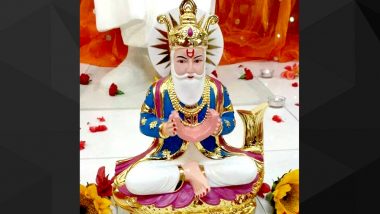Cheti Chand or Sindhi New Year is a festival that marks the beginning of the Hindu New Year for the Sindhi Hindus. It is celebrated by Sindhi Hindus in India and Sindhi Muslims in Pakistan. The festival date is based on the lunar cycle of the Hindu calendar. The day the new moon becomes visible after a no moon day, is called Cheti Chand. And the day is also celebrated as Jhulelal Jayanti. This year, the Cheti Chand will be celebrated on March 18, the same day as Gudi Padwa in Maharashtra. The festival also marks the arrival of spring and harvest. The timings for puja this year are, Dwitya Tithi begins 09:01 pm on March 18 and Dwitya Tithi ends on 08:23 pm on March 19.
Significance
The Sindhi community celebrates the festival of Cheti Chand to commemorate the birth anniversary of Istadeva Uderolal, also populary known as Jhulelal, the patron saint of Sindhis. In the 10th century, Sindh was under the tyrannical Muslim ruler named Mirkhshah. According to legends, the Sindhis were threatened by the tyrant, who warned them of dire consequences if they refused to convert to Islam. The Sindhis prayed to God on the banks of the Sindhu river for 40 days. On the last day, they heard a voice from the skies that a divine baby would soon be born to Devaki and Ratanchand Lohano in Nasarpur. The baby was named Udaichand and was also called Uderolal. The saint derived his name Jhulelal after the cradle that carried the baby rocked on its own and lulled the baby to sleep without any human assistance . Therefore, the baby was named Jhulelal – the lord of the swing.
When the child opened his mouth, people saw the mighty Sindhu river flowing inside the mouth. On the holy river, they saw a serene old man with a white beard sitting on a Pala fish – a fish native to the Sindhu river. Mirkshah attempted to kill the baby but repeatedly failed. Once Jhulelal turned old enough, he confronted the tyrant and made him realise his folly. Mirkshah apologised to him for his grave mistakes and Sindhis were rid of the crimes committed against them. The Sindhi saint is hailed by Hindu Sindhis because he saved them from the demonic rule of Mirkshah. It is believed that Jhulelal is an incarnation of Lord Varuna or river God.
Celebrations
On the auspicious day, devotees of Jhulelal celebrate this day with great fervour and enthusiasm. People worship water on this day as it signifies the elixir of life. Another major tradition observed on this day is the procession taken out in public called Baharana Sahib. The Baharana Sahib consists of jyot (oil lamp), phota (cardamom), fruits and akha (mix of rice and sugar). Further they take kalash (bronze pot) and coconut which is covered with a red cloth, flowers and leaves and behind is the idol of Jhulelal. The Baharana Sahib is taken to the river and the akha is offered to the jal devta (river God) and the prasad (sweet offering) is distributed among the devotees.
Lot of Sindhi families organise melas (fair) and mouth-watering Sindhi delicacies are prepared on this day. People enjoy and celebrate this festivity by dancing, singing and taking part in community meetings. People chant the famous Sindhi slogan - Jhulela kar beda par, which means make us reach the shore safely. We wish everyone out there Happy Cheti Chand.
(The above story first appeared on LatestLY on Mar 16, 2018 03:14 PM IST. For more news and updates on politics, world, sports, entertainment and lifestyle, log on to our website latestly.com).













 Quickly
Quickly


